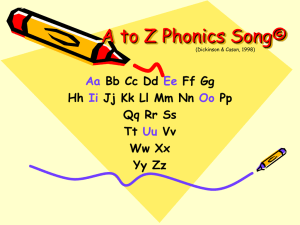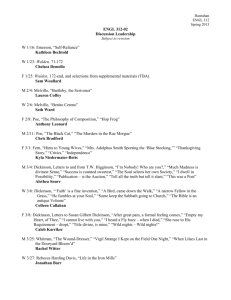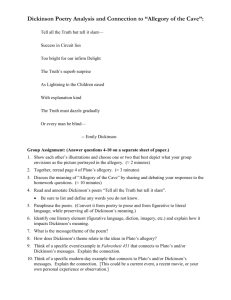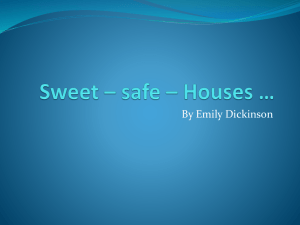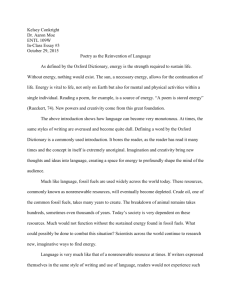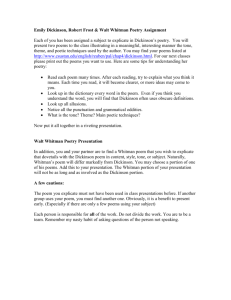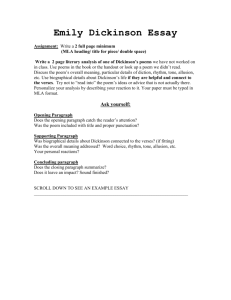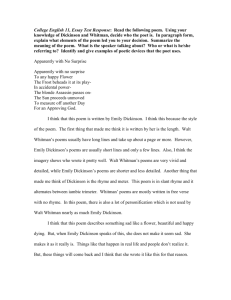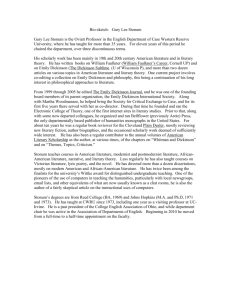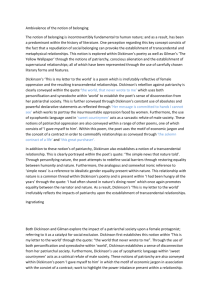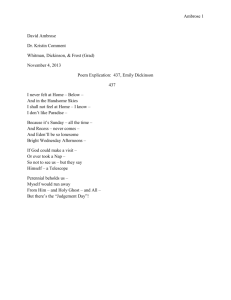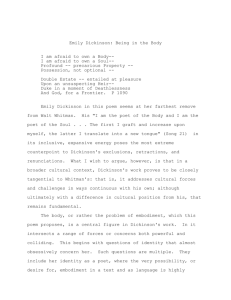“One need not be a Chamber—to be Haunted—“
advertisement
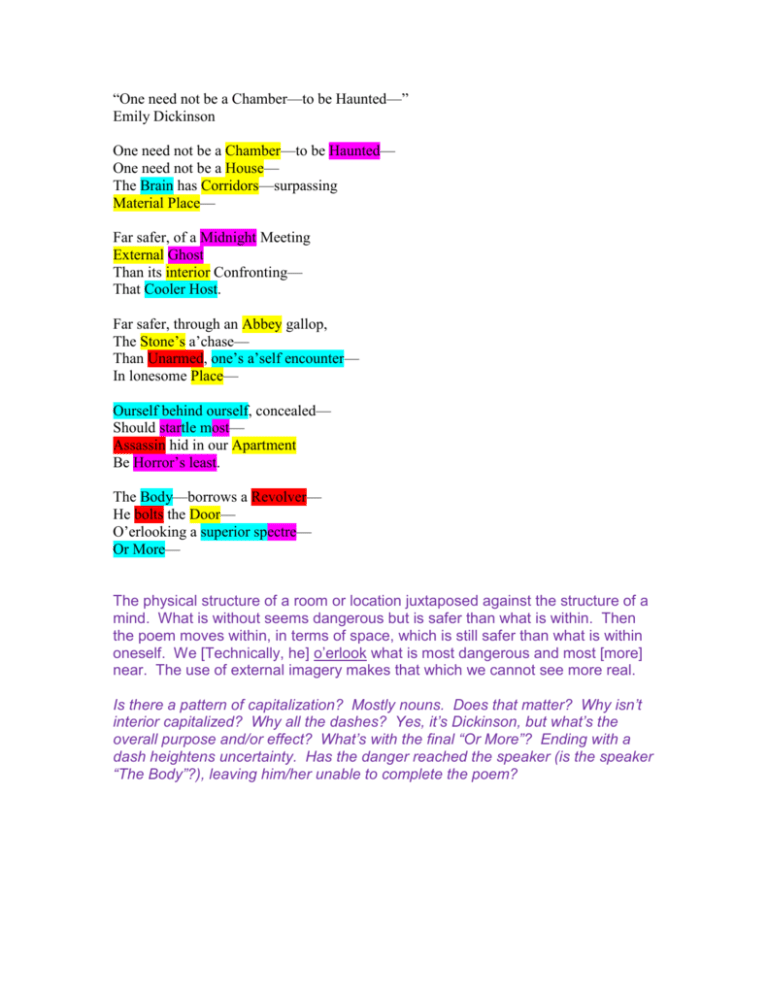
“One need not be a Chamber—to be Haunted—” Emily Dickinson One need not be a Chamber—to be Haunted— One need not be a House— The Brain has Corridors—surpassing Material Place— Far safer, of a Midnight Meeting External Ghost Than its interior Confronting— That Cooler Host. Far safer, through an Abbey gallop, The Stone’s a’chase— Than Unarmed, one’s a’self encounter— In lonesome Place— Ourself behind ourself, concealed— Should startle most— Assassin hid in our Apartment Be Horror’s least. The Body—borrows a Revolver— He bolts the Door— O’erlooking a superior spectre— Or More— The physical structure of a room or location juxtaposed against the structure of a mind. What is without seems dangerous but is safer than what is within. Then the poem moves within, in terms of space, which is still safer than what is within oneself. We [Technically, he] o’erlook what is most dangerous and most [more] near. The use of external imagery makes that which we cannot see more real. Is there a pattern of capitalization? Mostly nouns. Does that matter? Why isn’t interior capitalized? Why all the dashes? Yes, it’s Dickinson, but what’s the overall purpose and/or effect? What’s with the final “Or More”? Ending with a dash heightens uncertainty. Has the danger reached the speaker (is the speaker “The Body”?), leaving him/her unable to complete the poem? Skeletons in the closet. Bats in the belfry. Wolves at the door. People often create metaphors placing eerie, unfamiliar objects in common places. Emily Dickinson takes this idea one step further, making a comparison between a room in a house and the human mind. In her poem “One need not be a Chamber – to be Haunted,” Dickinson uses juxtaposition and imagery to convey the message that man’s fear of external forces often causes him to fall victim to a larger enemy, his own self. The overarching metaphor that Dickinson develops juxtaposes the physical structure of a room or location against the internal structure of the mind. This external imagery referring specifically to a “Chamber,” “House,” or “Apartment” solidifies the concreteness of these locations. Dickinson then mentions that “the Brain has Corridors” and there could be an “interior Confronting--/That Cooler Host,” connecting these more abstract ideas to those tangible places, thus making all of it more real. Additionally, all of these locations refer to confined spaces, both external and internal, suggesting the notion of being trapped. By starting with the larger spaces of houses and abbeys, Dickinson suggests that dangers without are actually safer than those within. She then moves within, in terms of space, such as a chamber or apartment, and implies that these are still safer than that which resides in oneself. As people guard against external concerns, they “o’erlook” the internal horrors that are most dangerous and most near.
